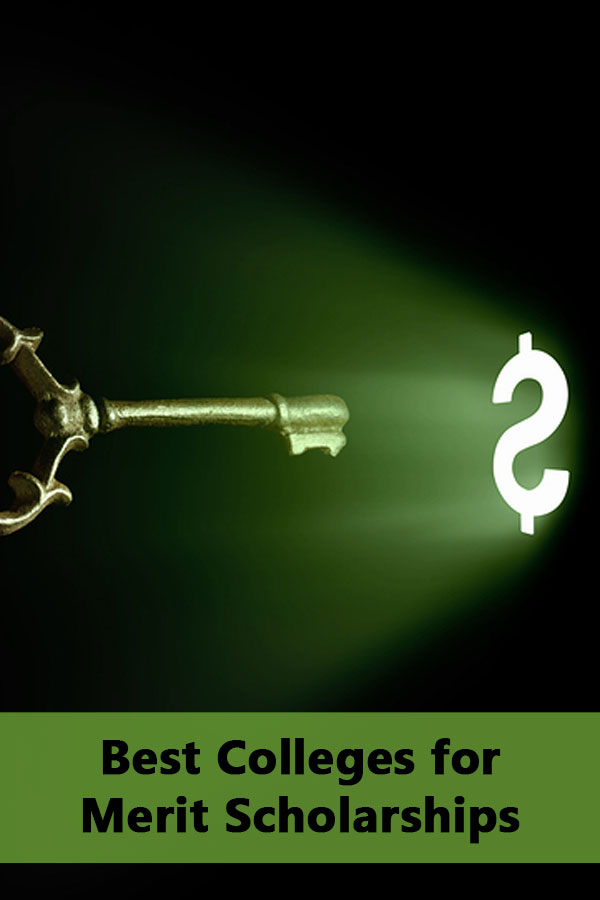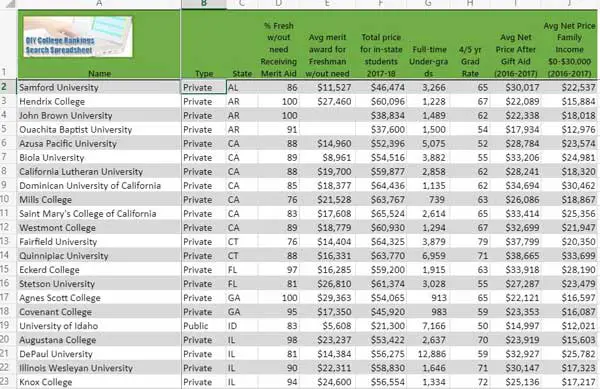 Students with high Expected Family Contributions (EFC) who want to pay less for college need to find those colleges most likely to provide generous merit aid. One way to do this is to identify colleges that have a high percentage of freshman without need who receive merit aid. The higher the percentage, the more likely students are to qualify for merit aid.
Students with high Expected Family Contributions (EFC) who want to pay less for college need to find those colleges most likely to provide generous merit aid. One way to do this is to identify colleges that have a high percentage of freshman without need who receive merit aid. The higher the percentage, the more likely students are to qualify for merit aid.
Join other parents in the Coffee Cup College Planning Facebook Group
This information is collected through the Common Data Set (CDS) which is used by publishers such as US News Best College Rankings and the College Board. About half of all colleges post their CDS surveys online for public viewing. Among the over 400 50-50 Colleges, 58% actually post the percentage of non-need freshman receiving merit aid. This is down from the 66% of three years ago.
What kind of colleges make the list?
Of those colleges that post the data, 125 reported that 75% or more of freshman without need received merit aid. These 50-50 schools are in 36 states, with New York and Pennsylvania having the most at 11 followed by Ohio, California, and Illinois.
- New York-11
- Pennsylvania-11
- Indiana-10
- Ohio-9
- California-7
- Illinois-6
- Iowa-5
- Massachusetts-5
- Michigan-5
- Oregon-5
The 125 colleges consist of 116 private schools and 9 public institutions. The private colleges had an average merit award of $18,701 while the average for public colleges was $7,098. This represents approximately a third of the average total cost of attendance of the private schools and a little more than a quarter of the in-state total cost for public institutions.
Lots of merit awards doesn’t mean the college will be affordable
However, you need to remember that these are averages. There are colleges with a high percentage of freshman receiving merit aid but the average award is well below the average. Four private colleges have an average merit award of less than $10,000.
The Hobart William Smith Colleges awards 94% of freshman without need merit aid but the average award is only $14,507. Given its total price is over $69,000, the average wouldn’t bring the total price to even below $45,000.
When you’re looking at the percentage of freshman who receive merit aid, you need to also consider the average award and the total price. Both Baldwin Wallace University and Fairfield University have average awards of over $14,000. Yet, the $14,000 is going to do a lot more to reduce costs at Baldwin Wallace which has a total price of $46,004 compared to Fairfield’s $64,325.
Beware of the data
There’s something else you need to be aware of when using these numbers–they could be very wrong. What am I talking about? Basically, the numbers from the Common Data Set don’t always add up. For example, University of Kentucky reported for 2017-18 that 5,107 students without need received institutional scholarships or grants. However, they also reported that 2,941 out 4,758 freshman were determined to have need. That means 1,817 didn’t. So by my calculations, 280% of students without need received institutional funding.
Yeah, there’s obviously a mistake. However, these types of mistakes don’t always get caught and will make it into publisher data. The publishers don’t have any other source to double check it. Nor do they really have any means to compel the colleges to correct it since they aren’t being paid to provide it. Well, except if it affects their rankings and they could be unranked the following year.
In any case, I have had multiple schools with percentage over 100 or in the negatives. I’m just setting those over 100 to 100 for the purposes of this article. Because you know what, it’s probably just as reliable as the actual average awards and this is really an exercise to get people to look at colleges outside their comfort zones and start looking at data. This is why I use multiple data points for targeting colleges.
The following tables shows 50-50 colleges where at least 75% of freshman without need received merit aid based on data available from the their websites. There may be more but not all schools post their data. As usual, the 4-year graduation rate is used for private schools and the 5-year rate for public. You can see other ways of target colleges for merit money by searching my website for “merit aid.” I suggest starting with 4 Easy Steps to Find Colleges for Potential Merit Scholarships. All of this information is part of the DIY College Rankings Spreadsheet.
Best 50-50 Colleges for Merit Scholarships
(75% or more of non-need freshman receive merit awards)




1 thought on “50-50 Highlights: Best Colleges for Merit Scholarships”